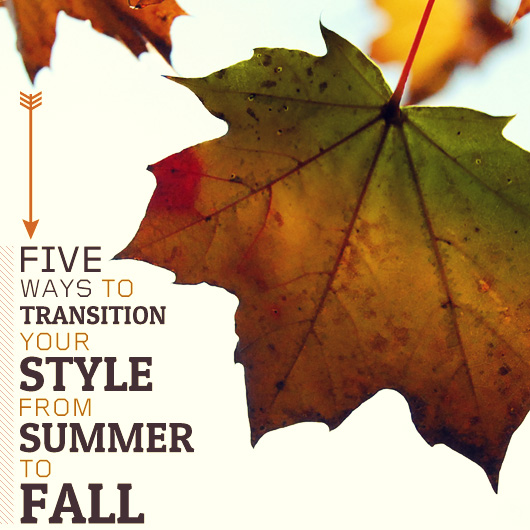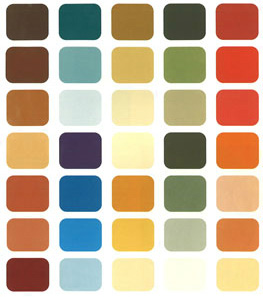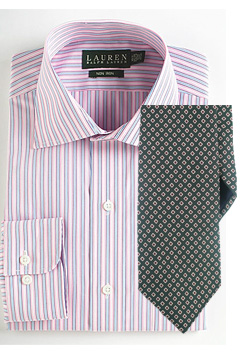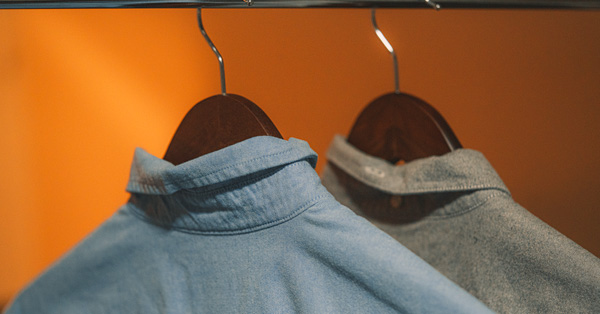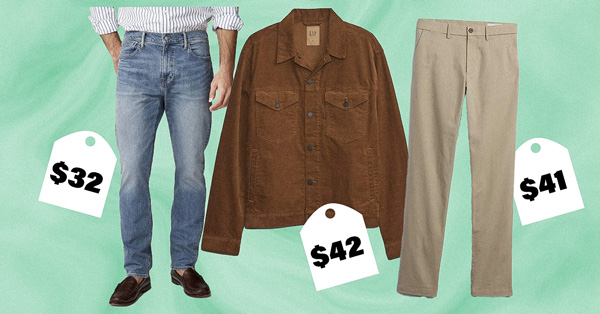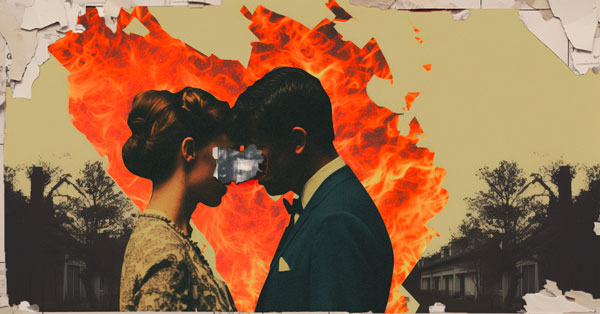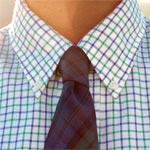For most men who find themselves in a temperate climate, September and early October can be the most sartorially difficult time of year. It’s time to put away your shorts, linen, seersucker, and espadrilles, but it’s still too early for tweeds, jackets, and flannels.
Thankfully there are a few things that a man can do to make the transition easier and more comfortable.
Wear Warm Colors
Women are more aware of this than most men, but each season has a corresponding color palette. It takes its inspiration from the colors that naturally occur in the world during that season.
Now, I’m not recommending you take a Pantone flipbook with you when you go shopping to make sure you get the perfect shade of burnt orange, but I am suggesting that a little awareness can go a long way.
Thankfully, autumn is one of the easiest palettes to both recognize and work with. Just think of earth tones and colors like browns, olives, burgundies, oranges, and golds.
Finding clothes that wear well in warm weather but have autumn colors will allow you to adapt to the season without having to adjust your wardrobe’s comfort level.
Swap Out Your Shoes
Unless you’re wearing flip-flops everywhere you go (highly doubtful for our site’s readership) there won’t be much of a comfort transition in your footwear.
Most seasons have specific shoes. Spring and summer are associated with sandals, canvas sneakers, and boat shoes, whereas autumn and winter are more home to boots, brogues, and bluchers.
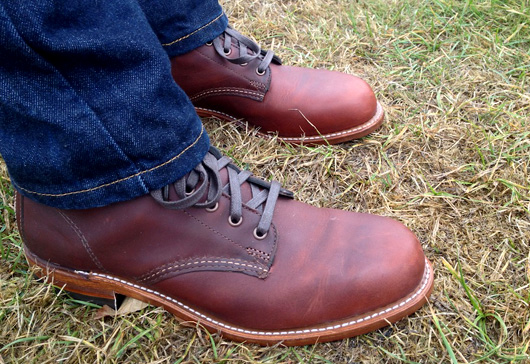
Boots: Wolverine 1000 Mile | Jeans: Levi’s 511
Unless you’re planning on jumping from sandals to snow boots, the transition won’t have too large of an effect on your level of comfort. Wearing work boots, heavier dress shoes, and desert boots gives a nod to the upcoming season without adding extra sweat to your feet.
You can also prepare by just adding socks to your summer shoes. Of course, that's assuming this means you’re on board with the polarizing sockless trend. If you are, you can keep wearing your boat shoes and loafers well into Fall by simply throwing socks on with them. One word of warning though – if you plan to wear socks with summer shoes, it’s only appropriate to do so with pants.
Change Fabrics in Small Doses
There are certain fabrics and materials that are associated with cooler weather – tweed, wool, cashmere, and flannel being the most easily recognizable. Jumping from your unstructured linen blazer to its tweed counterpart is getting ahead of yourself, and there will be plenty of days that will be warm enough to make you regret the decision.
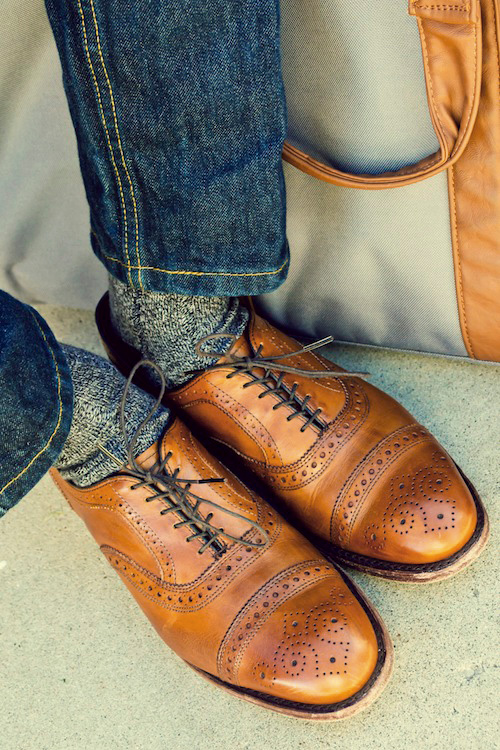
Shoes: Allen Edmonds Strand | Socks: Target Marled Wool | Jeans: Levi’s 511
It is much easier to make the change to those more winter-weight materials in smaller doses and on items that don’t affect your body temperature. Things like your tie, pocket square, socks, watch band, and other small areas are prime places for a transitional piece.
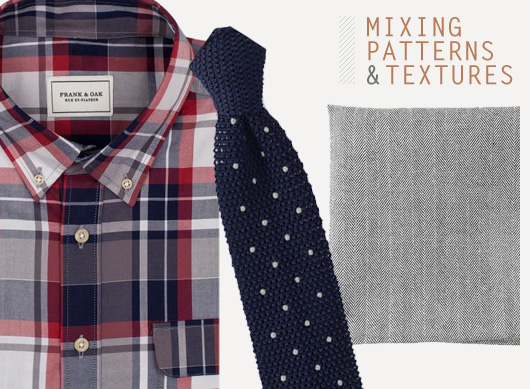
Shirt: Frank & Oak | Tie: The Tie Bar | Pocket Square: The Tie Bar
It also helps to keep a balance between summer and winter-weight materials. Pairing a knit tie with a wool square demonstrates variety and an understanding of the changing season.
Get All-Season Items
And speaking of the changing seasons, there are certain items of clothing that are appropriate in all types of weather.
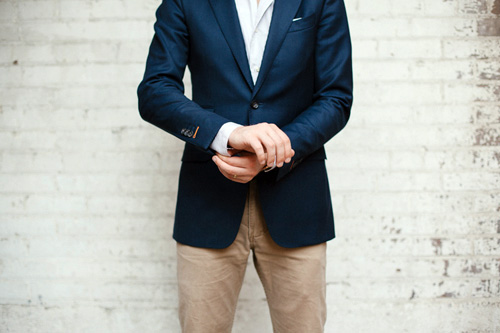
Jacket and Shirt: Beckett & Robb Custom | Chinos: Dockers Alpha Khakis
Work shirts, all-season suits, a tried-and-true navy blazer, dress shoes, neutral chinos, and oxford cloth button down shirts are appropriate any time of year. By mixing these all-season items with some of the suggestions above you won’t appear overly anxious for snow season.
Layer
This last step is the most obvious and I won’t claim to offer anything new or novel here. However, there’s a reason layering is on everyone’s mind when the seasons change – it’s simple and effective.
It’s very rare to have the temperature be the same when you get home at night as it was when you left in the morning. Fall is a transitional season and that transition isn’t always long term. By having a few extra layers you’re able to adapt through the day.
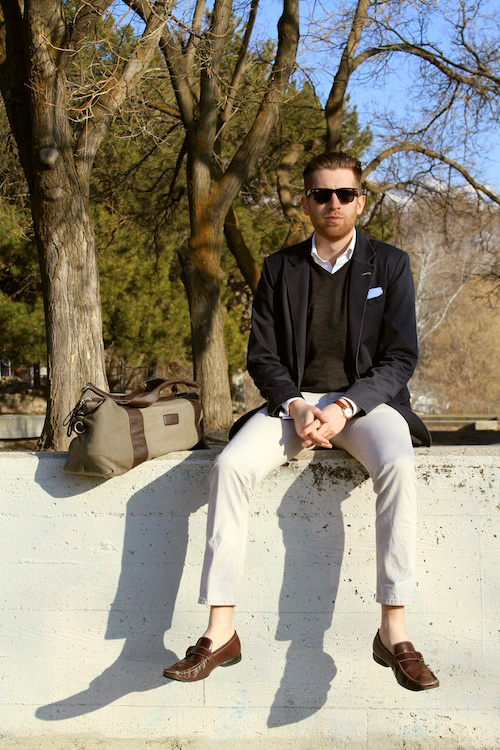
Jacket: LL Bean Signature | Shirt and Sweater: H&M | Sunglasses: Ray Ban Wayfarers | Chinos: Forever 21 Men | Shoes: Aldo | Watch: Vintage Elgin
Keep in mind that layering at the beginning of the season is entirely different than the end. Early September may mean wearing a camp shirt over your t-shirt, whereas mid-October is going to require a shirt and jacket, and the end of November is a sweater, blazer, scarf, and gloves.
Layering is so easy and effective because you can do as much or as little as you want to. So don’t hesitate to break out the lighter, simpler layers as we’re just getting reacquainted with the changing leaves and dropping temps.
While we can (and probably will) devote an entire post to the science of proper layering, here’s a basic breakdown of how to do it effectively.
Factor in color.
If you’re wanting to appear unassuming then choose similar colors and shades for each layer. If attention is what you’re after then having one or two pieces that really stand out is the quickest way to get noticed.
Vary your textures and materials. Like we addressed earlier, mixing cold-weather specific fabrics with those already in your rotation helps to make the transition appear more intentional and gradual. All of these differing fabrics – cotton, linen, tweed, silk, wool, and others are different from both a tactile and visual perspective. Start the early season with a balance that tends more towards summer materials and finish it off with one that favors winter. The trick is to make sure you always have at least two options from your less dominant season – otherwise that single fabric sticks out in a bad way.
Mix in pattern.
When you’re just getting started with patterns, it’s best to stick with one or two and keep everything else solid. As you gain more experience you can start to expand from there. Adding in pattern is another indicator of an intentional wardrobe – and one of the things a man should always communicate with his clothing is that he lives intentionally.
Feel free to use any or all of these methods together. None are mutually exclusive and all are effective either on their own or in tangent. Remember also that dressing transitionally is intended to help you accomplish two goals – feel more comfortable and look better. You may honestly be fine getting through January in shorts and a T-shirt but wearing a seasonal uniform in its off season will be distracting and affect the way other people perceive you (and your sanity).



